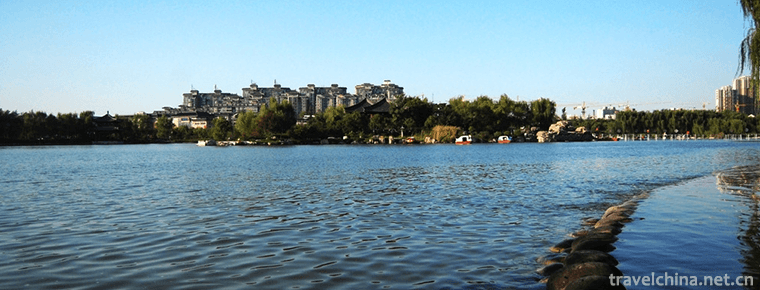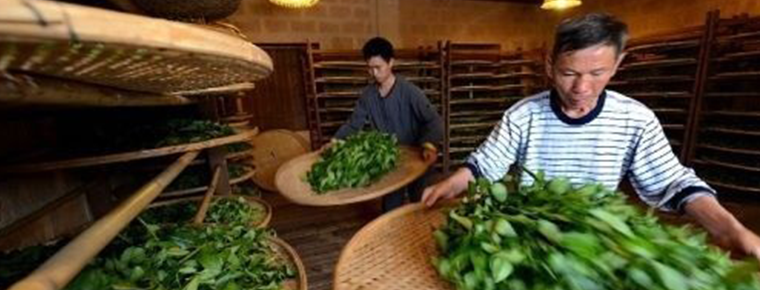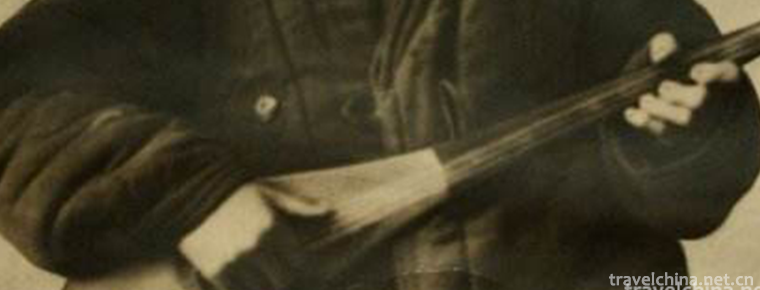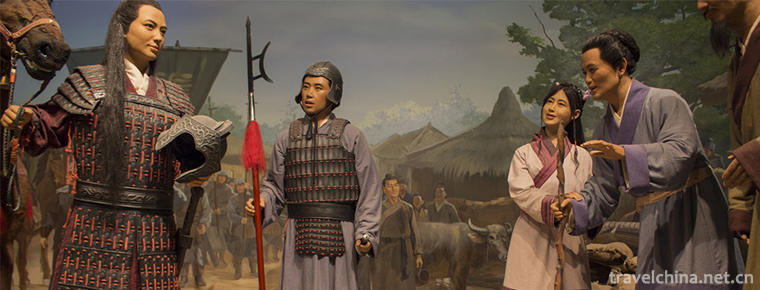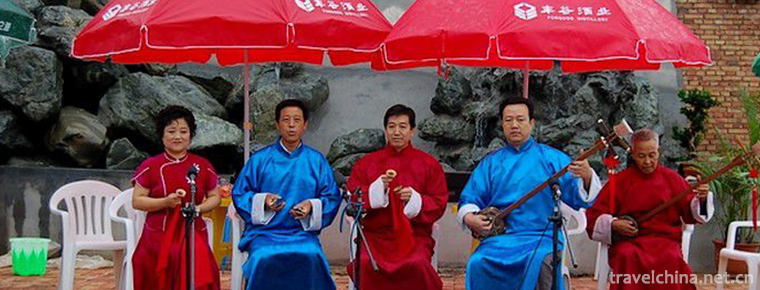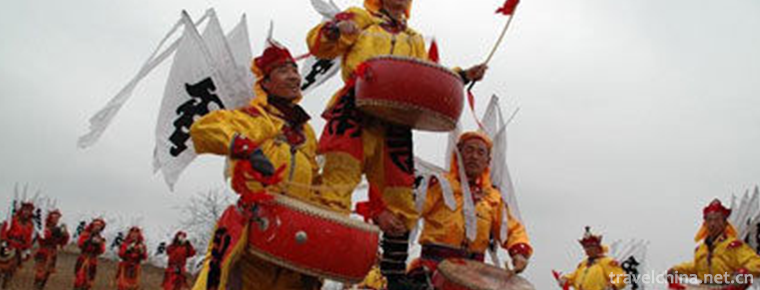Uygur Sainem
Uygur Sainem
Among the numerous traditional folk dances, "Sainem" is the most common form of Uygur folk song and dance. It is widely spread in the towns and villages in the north and south of Tianshan Mountains and is deeply loved by the Uygur people. This kind of dance is very free and lively, without the requirement of fixed procedure, the dancer improvises. One person can dance alone, two people can dance, or three, five or more people can dance together. The dancing movements are beautiful and graceful. Uighurs dance during festivals, weddings and regular family and friends gatherings.
On June 7, 2008, the "Uygur Sainem" declared by Hami District and Shache County of Xinjiang Uygur Autonomous Region was listed in the second batch of national intangible cultural heritage list with the approval of the State Council. Heritage serial number: 693 III-96.
historical origin
Senem has a long history. It mainly originated in the oases of Southern Xinjiang, which are engaged in agricultural production, ethnic cohabitation and highly developed culture. In the process of the formation of the twelve Mukams of Uygur classical music, it absorbed the Sainem, which had been circulated among the people for a long time, and became an integral part of the Poor Naiman in each Mukam, and Sainem still spread widely in its independent form.
After liberation, with the breaking of the fetters of feudal ethics and the improvement of women's political status, the majority of Uygur working women were able to compete in mass places.
artistic characteristics
artistic form
Sainem dance is free and lively. There is no fixed formula. The dancer improvises and closes the music rhythm. He can dance alone, two people or three or five people together. When Sainem dances, it usually changes from medium speed to fast speed. When singing and dancing come to the climax, people often shout "Kai-Na!" with enthusiastic voice. At this time, people's voices, drums, joy and noise, the hot atmosphere to the climax, so that all participants are extremely excited and excited.
Because of the music and rhythm characteristics of Sainem, the dance moves are beautiful and graceful. The characteristics of Sainem dance are shown in the operation and ingenious cooperation of head, shoulder, wrist, waist and calf. Such as head neck movement, head shaking; wrist movements include wrist twisting, wrist turning, wrist rubbing; waist part has chest, waist, back; leg part of the action is more abundant, such as point, kick, stamp, roll, roll, etc. Sainem's dancing gestures are mostly refined from life, such as the most common style, such as bracket, sleeve, skirt pulling, look-out, breast stroking and so on. When the performance reached its climax, the dancer knelt on one leg, clapped his hands in front of his abdomen and shrugged his shoulders. Then he opened his hands downward, raised his right hand over his head and wrapped his wrists. His left finger rested on his knee and gently moved his neck twice. This group of movements include clapping, shrugging shoulders and wrist-twisting, while the final neck movement plays a key role, highlighting the dancer's happy and self-satisfied mood.
Secondly, Senem's gait is characterized by both control and stiffness of the knee, flexibility and lightness of the calf, and close combination with drums. The most frequently used steps are three steps and one lift (the first three steps). The steps are smooth and slightly trembling. When you take the fourth step, the power leg and the sole of the foot rub backward and kick slightly, which shows that the footwork is very crisp and dexterous.
The characteristics of Sainem's dance style are inseparable from the Uygur people's life customs, personality, clothing and other characteristics. In local life, when they encounter happy things, their head and neck can not help shaking. These movements are absorbed in Sainem, showing the optimistic spiritual outlook of the Uygur people. In addition, the movements of rotation and waist are also abundant, which is related to the absorption of ancient Hu Xuan dance.
Music
Sainem's music is a kind of singing and dancing music formed on the basis of folk music in various regions. It has beautiful melody, deep feeling and distinct rhythm. It is composed of different numbers of songs. It can be increased or decreased when singing, but the order can not be reversed. It must be closely coordinated with the music rhythm and adapt to the dancer's emotional development. Its rhythm basically has the following two kinds, from slow to fast.
Prop
Sainem's accompaniment instruments are usually plucked, Jewafu, Duit, Shatar, Dafu (i.e. drums). The hand drum plays an important role in Senem. It not only grasps the speed, but also enlivens the atmosphere with the loud and fluent drum sound.
Regional differences
Xinjiang has a vast territory, which makes the Sainem dance have different local styles. Kashgar is the representative of Southern Xinjiang, where the Sainem dance is lively, affectionate and graceful, the pace is light and dexterous, the use of various parts of the body is more meticulous, especially the changes in wrist and dance posture are extremely rich; Ili is the representative of Northern Xinjiang, whose Sainem dance absorbs some dance elements and movements of other nationalities. Eastern Xinjiang is represented by Hami, where the music of Senem is relatively slow and the rhythm retains unusual rhythm. Its dance moves are steady and its wrist changes little. It is basically a half-clenched fist, swinging left and right on the head and one-step comparison. Many. Because of the different styles and characteristics of Senem in different regions, people are accustomed to wear place names in front of Senem to show their differences, such as Kashgar Senem and Ili Senem.
Kashgar, Kuche and Hotan are the famous hometown of Shule, Guizile and Yudanle respectively. Folk songs and dances in these places retain more of the old style characteristics. For example, Kuqa Sainem retained more basic vocabulary and rhythmic features of "snapping fingers", "making eyes", "shaking head", "crossing feet" in the Qiuzi dance of Han and Tang Dynasties, with a quick and agile pace and a rich variety of wrists and dancing postures. Sainem dances in pairs, moving forward and backward side by side or rotating in opposite directions. Dancing posture varies with music. Northern Xinjiang is a mixed area of ethnic groups. At the same time, due to geographical conditions, the culture here is affected by some foreign influences. The Sainem dance in northern Xinjiang also absorbs some dance elements of other nationalities. Its movements are unrestrained, bold and lively, and occasionally there are calm and humorous little movements. Eastern Xinjiang is close to the interior. In Hami, besides Uygurs, there are also Han, Mongolian and Kazakh nationalities. In terms of culture, they influenced each other and absorbed the dance movements of Han and Mongolian nationalities in Hami Sainem dance. Especially prominent is that it has the characteristics of slow rhythm and small range of movement in the Central Plains dance, which makes the dance appear implicit and steady.
Current situation of inheritance
It is said that Sainem originally meant "Beauty Buddha" and originated in the flourishing period of Buddhism. Now, the following folk song is still popular: "Where was the beautiful world in the first place?" Because of the appearance of the beautiful Buddha "Sainem", he used mud to make a statue and dedicate everything to the world. Buddhism did prevail in ancient Hami, especially among the Uighurs in Sui and Tang Dynasties. The form of Hami Saim's song and dance originating from Buddhism is well-founded in history. Now the basic form of Hami Senem is as follows: first, Hami Czech (commonly known as beard) plays sobbing sad music; the rhythm changes from slow, medium to fast, with some singing in the middle; drums sing in unison, ending with a lively, spectacular dance. Whenever people work hard, or miss friends, or in adversity, depression and sorrow, they will sing and jump to relieve depression and mental pain. When marrying, celebrating New Year's Day, or holding Messilev and other entertainment gatherings, singing a song of Saim, dancing and dancing can push the happy scene to its climax. In short, the cultural life of the Uygur people in Hami and Yiwu areas is very rich. Both the past and the present have added brilliance to the Uygur culture and Chinese culture and become important spiritual wealth. After the founding of New China, Hami Messilev was refined by professional literary and artistic workers and moved to the stage. In the 1970s, the regional cultural troupe performed "Summer Harvest Messilev" and "Wedding Messilev", which maintained the form and style of Messilev.
Inheritance Significance
Sainem is an indispensable part of Uygur people's daily life. When celebrating festivals, weddings and gatherings of relatives and friends, it is necessary to hold a Messilev party and jump Sainem. Every time, the village hosts a family and participates with the village's men, women and children. The main activities of the evening party are the dancing of Nam, with games such as bowls of flowers, wine cups, belts and so on. Sometimes, they also sing Mukam, guessing riddles and chanting poems.
For example, on the first day of a wedding, friends of both sexes usually invite the groom, bride and relatives and friends to celebrate at home. In the evening, the groom and his friends went to the bride's house to greet their relatives. All the way, the orchestra played together, singing and dancing. Throughout the day, the groom danced Saim. During the performance of Sainem, the band gathered in a circle to accompany, and the crowd clapped and sang. Dancers do not sing, accompanying singers to gently turn to listen to the songs, in addition to singing familiar songs, but also improvised new words with old tunes, describing the scene, to express everyone's joy.

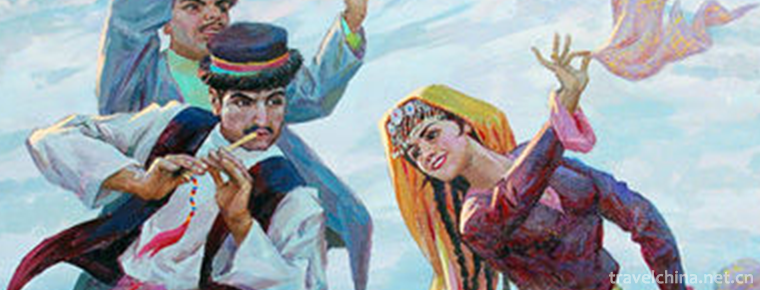
-
South Lake
Nanhu, formerly known as Luweichi Lake, also known as Machang Lake and Luanhu Lake , is located in Nanhu District, Jiaxing City, Zhejiang Province.
Views: 238 Time 2018-12-07 -
Bali River Scenic Area
Bali River Scenic Spot is a national AAAAA-level tourist attraction with "Global 500 Top" environmental protection. It is located in Yingshang County.
Views: 248 Time 2018-12-08 -
Baiyunshan National Forest Park Luoyang
Baiyunshan National Forest Park is located in the primitive forest area of Funiu Mountain in the southwest of Songxian County, Luoyang City, Henan Province, with a total area of 168 square kilometers.
Views: 189 Time 2019-02-06 -
Production Techniques of Flower Tea
Jasmine tea, also known as jasmine fragrance, is the tea and jasmine flowers to blend, bass, so that tea leaves absorb flower fragrance into tea, tea fragrance and jasmine fragrance interactively inte.
Views: 172 Time 2019-05-04 -
Kirgiz Kumzi Art
Kumzi is an ancient plucked instrument unique to the Kirgiz people. The meaning of "Kumzi" Kirgiz people is "beautiful musical instrument". Mainly spread in Xinjiang Kirgiz Autonom.
Views: 169 Time 2019-05-09 -
Lanxi stall spring
Lanxi Spring Spring Spring Spring is an ancient form of sitting and singing art, which was formed and popular in Lanxi area in the Midwest of Zhejiang Province, Jinhua and Quzhou, and belongs to Nanci.
Views: 149 Time 2019-05-10 -
Mulan Legend Hua Mulan Legend
Mulan legend is one of the Chinese folklores. Mulan legend began in Sui and Tang Dynasty. It is characterized by the spread of Chinese folk oral language in the early period, and then by the appearanc.
Views: 120 Time 2019-06-06 -
Qin an Xiaoqu
Qin'an Xiaoqu, also known as the old tune of Qin'an, is one of the national intangible cultural heritages. It is an ancient traditional folk art variety formed and mainly popular in Qin'an and other c.
Views: 174 Time 2019-06-10 -
Triple Drum Jump
Dancing three drums is a kind of opera which is popular in counties (cities) such as public security, Shitou, Jiangling and Songzi. It evolved from the funeral board and funeral drum song of sacrifici.
Views: 256 Time 2019-06-21 -
Brick carving
Brick carving refers to the carving of landscape, flowers, figures and other patterns on green bricks. It is an important art form in ancient architectural carving. The production technology and core .
Views: 241 Time 2019-08-10 -
Taoping Qiang Village
Taoping Qiang village is located in Taoping Township, beside Zagunao River in Lixian County. Qiang village is 40 km away from Lixian City, 16 km from Wenchuan city and 139 km from Chengdu. It is a national key cultural relics protection unit and an important scenic spot in Jiuhuang line tourism circle..
Views: 128 Time 2020-11-07

